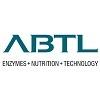Check out what is new in Poultry Industry
Find the best technical articles, forums, and videos on Poultry Industry at Engormix. Enter now and interact with the world's largest agricultural social network.
.jpg&w=3840&q=75)
Fernanda Castro, Technical Service Manager at Evonik Animal Nutrition, points out how to balance sustainability goals with meeting the nutritional needs of animals, as well as producing high-quality animal nutrition products
...
Comments : 0
Recommendations: 4
.jpg&w=3840&q=75)
Dr. Jan-Olaf Barth, Head of Evonik's Essential Nutrition product line, talks about Evonik’s commitment to the animal nutrition industry
...
Comments : 0
Recommendations: 1
Introduction High levels of production and efficient feed conversion are the need of the modern livestock industry which to a certain extent could be achieved by using specific feed additives. Feed additives are of great interest in the poultry industry due to their property to promote growth and performance. Common feed additives used in poultry diets include antibiotics, antioxidants, emulsifiers, binders, pH control agents and enzymes. Antibiotic feed additives as growth...
Comments : 9
Recommendations: 5
Introduction Summer and Disease The mercury is soaring high throughout the country, and it seems there is no respite soon. High environmental temperature leads to heat stress. Heat stress can lead to various harmful impacts on livestock productivity, such as high animal morbidity, mortality, and reduction in growth performance, directly resulting in dramatic economic losses to the livestock industry. Heat stress and transportation or shifting from EC shed to the...
Comments : 2
Recommendations: 2
Featured comment:

Zahed Abbasi Yes, ROS production will be increased under infection stress. As for protective effects of antioxidants, they will depend on dosage, a choice of antioxidant or their mixtures. In general, protective effects are not straight forward....
Comments : 6
Recommendations: 8
The Poultry Research Foundation, in conjunction with WPSA -Australian Branch, cordially invites you to the 35th Australian Poultry Science Symposium at the Sheraton Grand Sydney, Hyde Park.
The Australian Poultry Science Symposium (APSS) is the premier avian science conference in Australia, attracting delegates from right across the country and around the world. This year our conference will focus on an over-arching theme of: “Frontier Science - Integrating Nutrition, Gut...
Comments : 0
Recommendations: 0
Poultry diets are usually required to supply high nutrient and energy concentrations in order to meet the nutrient requirements of modern intensively reared birds. Commercial poultry feeds are frequently added with fats and oils to fulfill the energy requirements of poultry and to give high energy to support the growth performance (Blanch et al. 1996). Dietary fats and oils offer 2.25 times more energy than carbohydrate and they are also supplier of essential fatty acids and fat soluble...
Comments : 1
Recommendations: 0
Introduction In poultry production systems, feed represents between 70 and 80 % of production costs; energy, protein, and amino acids are limiting factors that significantly affect the poultry industry’s feed costs and performance (Cancherini et al., 2005). The availability of the synthetic amino acids methionine and lysine in poultry feeds allowed lower protein levels since these amino acids limit portions for chickens and hens (Ramírez & Gonzalez,...
Comments : 0
Recommendations: 0
.jpg&w=3840&q=75)
Aaron Cowieson (DSM) speaks on the industry outlook when it comes to taking advantage of what technology currently offers (artificial intelligence, use of data, automation), during this Engormix interview....
Comments : 0
Recommendations: 5
.jpg&w=3840&q=75)
Aaron Cowieson (DSM) discusses microbiome research in poultry nutrition and the feed additives considered, during this Engormix interview....
Comments : 1
Recommendations: 3
.jpg&w=3840&q=75)
Aaron Cowieson (DSM) talks about enzymes, amino acids and feed formulation in poultry nutrition, during this Engormix interview....
Comments : 20
Recommendations: 11
Introduction Modern broiler chickens are most certainly a most visible manifestation of genetic advancements. At hatch, a Cobb500 broiler weighs 42 grams. This newborn chick grows 31 % (55 g/bird) in just twenty-four hours. By day 35 of age, this chicken reaches a body weightof 2,521 grams, representing 5,902 % relative to hatching mass (Cobb-Vantres 500, 2022). Genetic selection, food, health, and management measures carried out intensively have resulted in these successes....
Comments : 0
Recommendations: 5
Following the success of the Research Topic “Alternatives to Antimicrobial Growth Promoters and Their Impact in Gut Microbiota, Health, and Disease: Volume II,” we received an invitation from Frontiers to work on Volume II. This second volume includes 31 scientific articles, in the text of individual chapters in this Frontiers Research Topic. The editors are grateful to all 197 authors that contributed and participated in the achievement of Volume II. Homo sapiens reached...
Comments : 0
Recommendations: 0
Soybean meal prices have been strong for nearly 2 years due to numerous factors such as pandemic fueled stockpiling, bullwhipping of supply/demand dynamics linked to asynchronous market reopenings and elevated input costs due to gross inflationary pressures. In this time, some regions have seen 100% increases in their local SBM prices - which has prompted a search for less expensive protein sources for their feeding programs. In Canada and parts of Europe, this has led to an increase in the...
Comments : 13
Recommendations: 5
I. INTRODUCTION Cereal grains such as wheat, sorghum, barley and maize are commonly used in poultry diets as the main source of energy. Knowledge on the metabolisable energy content of cereal grains is critical for their efficient use and precise poultry feed formulation. Despite several limitations (Mateos et al., 2019; Wu et al., 2020), the AME has been the globally accepted system for describing the dietary energy content for poultry. Modern, commercial broiler...
Comments : 2
Recommendations: 0
Introduction Since the major part of costs in poultry production is related to feed, minimizing this part of the costs which depends on feed ingredients is very important. On the other hand, phosphorous is usually one of the expensive nutrients in poultry feed. Therefore, the amount of nutrients in feed ingredients, especially available phosphorus, has a very important role in lowering the cost of feed. The main form of storage of phosphorus (P) in plant feedstuffs is phytate...
Comments : 0
Recommendations: 1
.jpg&w=3840&q=75)
Peter Surai (FeedFood, UK; Vitagene and Health Research Centre, UK, among others) explains the use of vitamin E and other additives when talking about meat quality, in this Engormix interview....
Comments : 1
Recommendations: 2
.jpg&w=3840&q=75)
Peter Surai (FeedFood, UK; Vitagene and Health Research Centre, UK, among others) presents on Engormix his talk about antioxidants and their use in poultry production....
Comments : 6
Recommendations: 8
1 Introduction Copper (Cu) is a crucial trace element in animals; however, it cannot be stored in the body, thus, a regular dietary supplement is required. In addition, feed ingredients are commonly deficient in Cu; hence, the commercial diet should provide the essential amount of Cu in a biologically dynamic form, which depends on the physical and chemical properties of the form of the supplement in which the Cu is given in the diet [1]. Cu sulphate (CuSO 4 ) is...
Comments : 0
Recommendations: 0
The incubation environment is important for embryonic development and programs chick welfare. The focus of this newsletter is on the effects of the incubator environment on chicken egg incubation, but the same principles can apply to other poultry species. For more information on hatchery topics, see our ...
Comments : 0
Recommendations: 2


.jpg&w=3840&q=75)


.jpg&w=3840&q=75)











.jpg&w=3840&q=75)
















